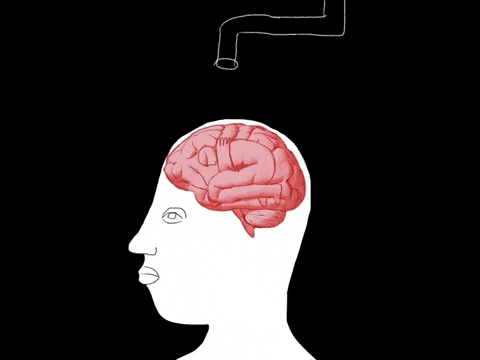Prosopagnosia (Face Blindness): Symptoms, Diagnosis & Famous People Who Have It
#TalkNerdyToMe® Staff Writer
Prosopagnosia, often referred to as face blindness, is a fascinating yet challenging neurological condition that prevents people from recognizing faces. Imagine living in a world where the face of your best friend, your partner, or even your own reflection looks like that of a stranger. For many, this is not science fiction—it’s everyday life.
Face recognition is one of the brain’s most specialized skills, and when it fails, the consequences ripple through nearly every aspect of social life. This article explores what prosopagnosia is, how it manifests, its history, causes, diagnosis, and the unique strategies people use to navigate the world without reliable face recognition.
<editorsnote>… and like me - you may not even know you have it!!!! :) That’s how I had a conversation with Robin Williams and had NO idea!!! </editorsnote>
What Is Prosopagnosia?
Definition of Face Blindness
Prosopagnosia is a neurological condition where people cannot recognize faces, even those of close family members, partners, or friends. Importantly, this does not result from vision loss or general memory problems. A person with prosopagnosia can see a face clearly, and they might even remember facts about the person, but the mental connection that says this face belongs to that person is disrupted.
The severity varies widely:
Some can’t recognize faces they’ve just met.
Others fail to recognize long-term friends or relatives.
In rare cases, individuals cannot recognize their own reflection in the mirror.
This spectrum makes prosopagnosia an incredibly personal condition, with no two experiences exactly alike.
Beyond this, there are subcategories:
Apperceptive prosopagnosia: difficulty perceiving a face’s structure (e.g., distinguishing facial features).
Associative prosopagnosia: the person can perceive a face but cannot connect it to stored knowledge of who that face belongs to.
This classification helps clinicians tailor support and understand whether the issue lies in perception itself or in linking perception to memory.
Historical Background
The word “prosopagnosia” comes from the Greek prosopon (face) and agnosia (not knowing). The first documented case appeared in the 19th century, but widespread recognition didn’t occur until the mid-20th century.
In the 1940s, German neurologist Joachim Bodamer published detailed case studies of soldiers who, after brain injuries, could no longer recognize faces.
Neurologist and writer Oliver Sacks later popularized the condition in books like The Man Who Mistook His Wife for a Hat. His storytelling made the struggles of prosopagnosia widely relatable, giving the condition visibility outside medical circles.
Initially, prosopagnosia was thought to be extremely rare, mostly linked to brain injuries. However, as developmental prosopagnosia gained attention, researchers discovered that it might affect up to 2% of the population—a surprisingly high number for something so little known.
Signs and Symptoms of Prosopagnosia
Common Symptoms
Inability to recognize familiar faces, including close family and friends.
Difficulty recognizing co-workers, classmates, or acquaintances.
Confusion in social situations, often mistaking strangers for people they know or vice versa.
Behavioral Signs
People with prosopagnosia often rely on compensatory strategies:
Identifying others by their hairstyle, voice, clothing, or body shape.
Paying close attention to accessories (glasses, jewelry, hats).
Using contextual clues—recognizing someone because of where they are (e.g., “That must be my neighbor because I’m standing in front of my house”).
Because these strategies are imperfect, people may:
Apologize frequently for not recognizing someone.
Pretend to recognize others to avoid embarrassment.
Withdraw socially to escape the anxiety of constant mistakes.
Impact on Daily Life
The ripple effects can be profound:
Social interactions: Casual encounters become stressful, leading to avoidance of parties or networking events.
Relationships: Friends or partners may feel hurt when unrecognized.
Professional challenges: Jobs requiring face recognition (teachers, managers, customer-facing roles) become especially difficult.
Entertainment: Movies and TV shows can be confusing, since keeping track of characters by face is nearly impossible.
Causes of Prosopagnosia
Neurological Factors in Acquired Prosopagnosia
Acquired prosopagnosia occurs after damage to specific brain regions:
Fusiform gyrus (in the temporal lobe): considered the brain’s “face area.”
Occipital lobes: important for visual processing.
Neural pathways linking perception and memory: damage here disrupts face–identity connections.
Causes include:
Traumatic brain injuries.
Stroke.
Infections such as encephalitis.
Neurodegenerative diseases (e.g., Alzheimer’s, Parkinson’s).
Developmental and Genetic Factors
Developmental prosopagnosia is more mysterious. Research suggests:
Hereditary patterns: Families sometimes show multiple members with face blindness.
Brain wiring differences: Subtle variations in connectivity between visual and memory areas may underlie the condition.
Early childhood development: Some children never develop normal face recognition, even without injury.
Diagnosis of Prosopagnosia
Diagnosing prosopagnosia is challenging because many people go undiagnosed, dismissing their struggles as clumsiness or poor memory.
Clinical Assessment
Interviews: Doctors ask about daily struggles and family history.
Neuropsychological tests: These measure memory, attention, and general vision to rule out other causes.
Face Recognition Tests
Cambridge Face Memory Test (CFMT): A widely used assessment where participants must recognize unfamiliar faces after exposure.
Famous Faces Test: Participants identify well-known celebrities to test recognition ability.
Brain Imaging
fMRI (functional MRI): Helps identify unusual activity in face-processing areas.
Structural MRI: Detects brain lesions or damage.
Accurate diagnosis is important, since prosopagnosia can be mistaken for social anxiety, introversion, or inattentiveness.
Coping Strategies and Support
While there’s no cure for prosopagnosia, individuals develop creative strategies:
Practical Strategies
Voice recognition: Paying close attention to tone, pitch, and speech patterns.
Distinctive cues: Memorizing someone’s clothing style, hair, or physical build.
Contextual awareness: Using location and situation to infer identities.
Technology aids: Smartphones with photo contact lists, labeled pictures, or even experimental face-recognition apps.
Emotional Support
Therapy and counseling: Helps individuals cope with anxiety, embarrassment, or isolation.
Support groups: Online communities connect people with shared experiences, reducing feelings of being “the only one.”
Disclosure: Some people openly tell others about their condition, which often reduces misunderstandings.
Living With Prosopagnosia
Prosopagnosia doesn’t exist in a vacuum—it shapes how people see the world and how the world sees them. For some, it’s a daily frustration; for others, it’s a manageable quirk.
Children with prosopagnosia may struggle in school, unable to recognize classmates or teachers, leading to mislabeling as shy or inattentive.
Adults may feel socially isolated, fearing professional consequences if they admit to not recognizing clients or colleagues.
Family members often need education to avoid misinterpreting prosopagnosia as disinterest or forgetfulness.
Myths and Misconceptions
“People with prosopagnosia have bad memory.”
False—most have perfectly normal memory for names, voices, and facts. The problem lies specifically with faces.“Face blindness means you can’t see faces at all.”
Incorrect—people see faces clearly but can’t link them to identity.“It’s just shyness or social awkwardness.”
Misleading—many go undiagnosed because others misinterpret the signs.“It’s extremely rare.”
Outdated—developmental prosopagnosia may affect millions worldwide.
Research and Future Directions
The study of prosopagnosia has grown rapidly in the last two decades. Areas of exploration include:
Genetics: Identifying genes linked to developmental prosopagnosia.
Brain training: Computer-based programs designed to improve face recognition skills.
Assistive technology: Glasses and apps that can identify people in real time using AI.
Though a complete cure doesn’t exist yet, these advances hold promise for improving quality of life.
Celebrities With Prosopagnosia (Face Blindness)
Prosopagnosia doesn’t just affect everyday people—it also impacts some of the world’s most recognizable celebrities. Ironically, many who spend their lives in the spotlight struggle with recognizing faces, including those of co-stars, fans, and even close friends. Here are a few famous individuals who have spoken openly about living with face blindness:
Brad Pitt
Brad Pitt has been candid in interviews about his struggles with recognizing people, admitting it has led to awkward situations. In an Esquire interview, he confessed that many people assume he’s aloof or arrogant when in reality, he simply doesn’t recognize them. Pitt even joked that he might never meet someone again if he doesn’t recognize their face the next time. His openness has sparked wider conversations about prosopagnosia in Hollywood.
Stephen Fry
British actor, comedian, and writer Stephen Fry has also spoken about difficulties recognizing faces. While Fry is celebrated for his wit and memory for words, he has shared that when it comes to faces, he sometimes feels completely lost—even with people he has met multiple times.
Chuck Close
Renowned artist Chuck Close, known for his massive, hyper-realistic portraits, lived with prosopagnosia throughout his life. His artwork became a way of compensating for his inability to recognize faces in real life. By painting portraits in extreme detail, Close created a permanent reference point that allowed him to connect with people in a way his brain wouldn’t allow naturally.
Bob Dylan
Legendary musician Bob Dylan described difficulties recognizing people in his memoir Chronicles: Volume One. While he never used the clinical term, his descriptions align closely with prosopagnosia. He admitted that encounters with familiar people often left him feeling disoriented, as though he was meeting strangers over and over again.
Oliver Sacks
The famous neurologist and author Oliver Sacks, who brought prosopagnosia into public awareness through his book The Man Who Mistook His Wife for a Hat, also lived with the condition himself. Sacks admitted that he often mistook strangers for people he knew—or failed to recognize people he had known for years. His personal experience gave his writing a unique depth and empathy.
Jane Goodall
Primatologist Jane Goodall has shared that she too experiences face blindness. Interestingly, her difficulty with human faces did not seem to carry over to chimpanzees, whose faces she could distinguish with remarkable clarity. This unique twist highlights how prosopagnosia can affect humans in ways that don’t always align with other forms of visual recognition.
Why This Matters
When celebrities like Brad Pitt or Jane Goodall talk about prosopagnosia, it helps break the stigma. Instead of being seen as “rude,” “forgetful,” or “disinterested,” people with face blindness can be better understood for what they’re truly experiencing: a neurological condition that makes facial recognition extraordinarily difficult.
Conclusion
Prosopagnosia, or face blindness, is more than a quirky brain glitch—it’s a condition that profoundly affects daily life, relationships, and self-identity. With greater awareness, accurate diagnosis, and supportive strategies, people with prosopagnosia can navigate the world with less stigma and more understanding.
By learning about prosopagnosia, we foster empathy for those whose world is shaped by a challenge most of us never think twice about: recognizing a face.
FAQ: Understanding Prosopagnosia (Face Blindness)
1. What is prosopagnosia?
Prosopagnosia, also known as face blindness, is a neurological disorder that makes it difficult or impossible for individuals to recognize faces. This includes familiar faces, such as those of family members, friends, and even their own reflection in some cases.
2. Is prosopagnosia caused by memory or vision problems?
No. Prosopagnosia is not caused by poor memory or vision. Instead, it results from the brain's inability to process and recognize faces, even when vision and memory are otherwise intact.
3. What are the main types of prosopagnosia?
There are two main types:
Acquired Prosopagnosia – Caused by brain damage (e.g., stroke, head injury, or infection).
Developmental (or Congenital) Prosopagnosia – Present from birth, with no visible brain injury.
Each type can also be further classified as:
Apperceptive Prosopagnosia – Difficulty perceiving facial features.
Associative Prosopagnosia – Difficulty connecting a recognized face with known information (like a name or context).
4. What are the common symptoms of face blindness?
Inability to recognize familiar faces, including close friends and family.
Trouble identifying faces in photographs or on television.
Difficulty following characters in movies or shows.
Often relying on alternative cues like voice, clothing, hairstyle, or body movement to identify people.
5. How does prosopagnosia affect daily life?
Face blindness can significantly disrupt daily activities, especially social and professional interactions. People may:
Avoid social situations to prevent embarrassment.
Apologize frequently for not recognizing someone.
Pretend to recognize others to avoid awkwardness.
Struggle with jobs requiring face-to-face communication.
6. How is prosopagnosia diagnosed?
Diagnosis typically involves:
Neurological and psychological assessments.
Face recognition tests (e.g., the Cambridge Face Memory Test).
Brain imaging (in cases of acquired prosopagnosia) to identify possible damage to face-processing regions like the fusiform gyrus.
7. What causes prosopagnosia?
Acquired cases are usually the result of damage to brain areas involved in visual processing, such as the occipital or temporal lobes.
Developmental cases may be linked to genetic or developmental factors, though the exact causes are still being researched.
8. Is there a cure or treatment for prosopagnosia?
There is no cure, but people with prosopagnosia can develop coping strategies:
Using non-facial cues to recognize people.
Informing others of their condition to avoid misunderstandings.
Seeking support through therapy or online communities.
9. Is prosopagnosia common?
While once thought to be rare, research shows that developmental prosopagnosia may affect up to 2% of the population. Many people with mild symptoms remain undiagnosed.
10. Can people with prosopagnosia recognize emotions or facial expressions?
Some can, while others may struggle. It depends on the severity and type of the condition. Not all face-processing abilities are impaired in every case.




